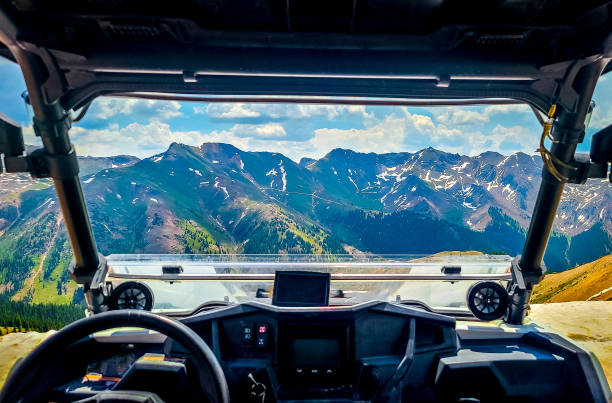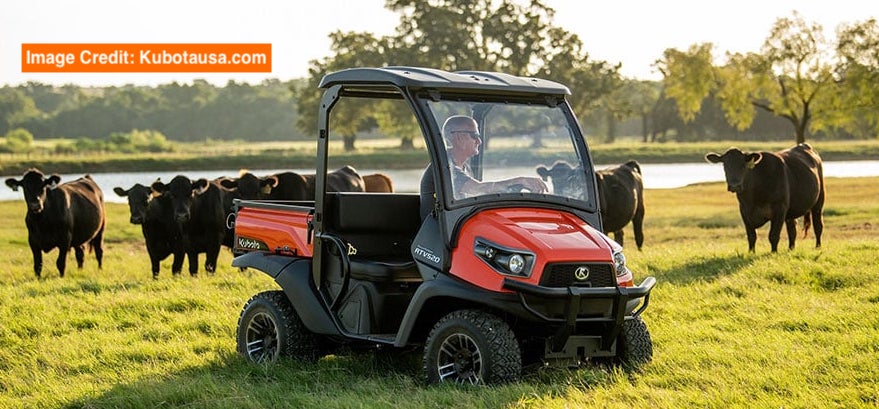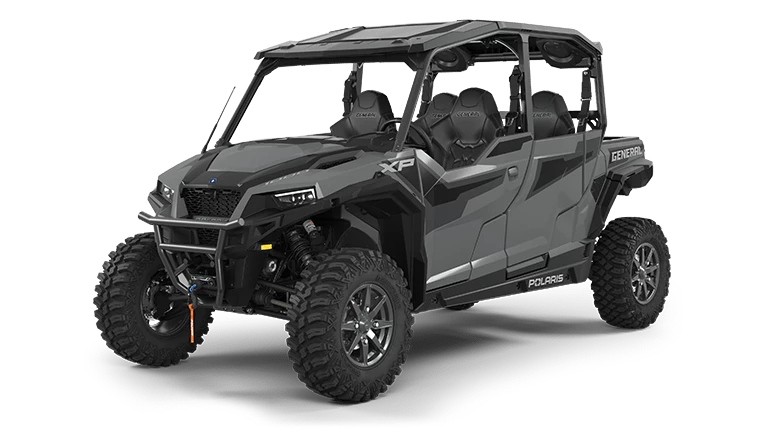As an Amazon Associate I may earn a commission from qualifying purchases at no additional cost to you.
When it comes to off-roading, enthusiasts often face decisions about fuel requirements for their vehicles. A particularly important consideration is the difference in fuel requirements between ATVs and Side by Side vehicles.
Understanding the correct oil mix ratio for ATVs and the specific fuel needs of Side by Sides is crucial for performance and longevity.

ATVs typically require a precise oil-to-gasoline mixture, which ensures smooth engine operation and prevents damage. This mixture varies depending on the manufacturer and model, making it essential for riders to follow their vehicle’s specific guidelines.
In contrast, Side by Sides generally use a separate oil system and a different approach to fuel management.
Choosing the correct fuel type and adhering to manufacturer guidance can enhance the power output and efficiency of these off-road machines. Riders who pay attention to these differences not only protect their investments but also enjoy a more exhilarating and reliable riding experience.
Understanding ATV Fuel Requirements

ATV fuel requirements vary depending on engine type and fuel quality. Two-stroke engines often require specific fuel mixtures, impacting performance and efficiency. High-quality fuel is also crucial for maintaining engine health and ensuring optimal performance.
ATV Engine Types and Fuel Usage
ATVs typically feature two main engine types: two-stroke and four-stroke.
Two-stroke engines require a fuel-oil mixture, usually ranging between ratios like 32:1, 40:1, and 50:1, which blends gasoline and 2-stroke oil. This mixture lubricates internal components during combustion.
Four-stroke engines, on the other hand, use gasoline-only fuel systems and have separate oil lubricants. They generally offer better fuel efficiency and reduced emissions. Understanding the specific fuel needs and efficiency of each engine type is crucial for optimizing ATV performance and longevity.
Impact of Fuel Quality on ATV Performance
Fuel quality significantly affects ATV engine performance. High-quality fuel, typically with adequate octane levels, promotes efficient combustion, smooth acceleration, and better throttle response.
Poor-quality fuel can lead to engine knocking and damage over time.
Clean fuel also reduces deposits in the engine, maintaining its internal components’ cleanliness and function. Using fresh, quality fuel helps avoid unwanted build-up, ensuring consistent performance and reliability, while extending the engine’s lifespan.
Fuel Mixture Ratios for Two-Stroke ATVs
Two-stroke ATVs rely on precise fuel mixture ratios for optimal operation. Common ratios like 32:1, 40:1, and 50:1 represent the balance between gasoline and 2-stroke oil. These ratios depend on specific engine requirements and environmental conditions.
Choosing the correct ratio ensures proper lubrication and smooth performance. Too much oil can lead to fouled spark plugs and exhaust smoke, while too little oil risks insufficient lubrication and damage. Understanding and applying these mixtures is essential for maintaining a two-stroke ATV engine.
Side by Side (UTV) Fuel Considerations
Side by Side (UTV) vehicles have specific fuel-related needs. Understanding these ensures optimal performance. Key areas include the vehicle’s fuel system, how ethanol affects fuel choices, and methods to enhance fuel economy.
Fuel System Requirements for Side by Sides
Side by Sides often have more complex fuel systems compared to ATVs. They usually contain electronic fuel injection (EFI) systems. EFI systems regulate fuel flow and are more efficient than carbureted counterparts. This precision in fuel delivery helps improve performance and can handle different types of fuel.
Regular maintenance, such as checking fuel filters and injectors for cleanliness, is crucial. It ensures contaminants do not negatively impact performance or cause damage. Routine inspections can prevent costly repairs and maintain optimal engine efficiency.
The Role of Ethanol in UTV Fuels
Ethanol is commonly found in gasoline. It plays a significant role in the fuel economy and performance of Side by Sides.
Ethanol-blended fuels, like E10 (10% ethanol), are widely available. These blends reduce emissions but may impact engine performance.
Ethanol can attract and hold moisture, leading to potential fuel system issues. Regularly using a good-quality fuel stabilizer helps mitigate problems.
When possible, using non-ethanol fuel or ethanol-blends with lower ethanol content can be beneficial, especially for long storage periods. This reduces the risk of moisture-related issues.
Optimizing Fuel Economy in Side by Sides
Efficient fuel usage in Side by Sides extends engine life and reduces operational costs.
Keeping tires properly inflated and maintaining correct wheel alignment helps. They both contribute to reducing drag and improving fuel efficiency.
Additionally, driving habits directly impact fuel economy. Avoiding rapid acceleration and maintaining optimal speeds is advisable.
Using high-quality fuel and adhering to regular maintenance schedules further enhances efficiency.
Regularly checking air filters for cleanliness and replacing them as needed ensures proper airflow to the engine. This simple step supports optimal combustion and efficiency.
Oil Mixing for ATVs
ATVs require precise oil-to-gasoline mixing to maintain optimal performance and durability. This ensures proper lubrication, minimizes engine wear, and is tailored to specific engine manufacturer specifications.
Essentials of Oil to Gasoline Mixing
Oil to gasoline mixing for ATVs is crucial in maximizing engine performance. Proper lubrication is vital, as it reduces friction and prevents engine overheating.
The mix ratio typically ranges from 32:1 to 50:1, based on the engine’s requirements and usage conditions. Specific ratios recommended by manufacturers should always be confirmed in the ATV manual.
Using the correct mix ratio is especially important in new ATVs to prevent engine damage during the break-in period.
Consistent oil changes and monitoring are essential to prolong engine life, ensuring the vehicle operates safely and efficiently.
Choosing the Right Oil for Mix Ratio
Selecting the appropriate oil for your ATV involves understanding types such as synthetic, conventional, and even motor oil blends.
Synthetic oils are often preferred for their superior lubricating properties and temperature stability. Conventional oils can also be viable, depending on the vehicle and recommended manufacturer specifications.
It’s essential to consider the viscosity and appropriate compatibility with the engine type. Seasonal conditions and usage intensity might also dictate oil selection.
Consulting the ATV manual can provide specific guidance, ensuring that the chosen oil supports the designated mix ratio and lubrication needs effectively.
Mixing Techniques and Best Practices
Proper technique in mixing oil and gasoline impacts performance significantly.
Always utilize a clean, dedicated container for blending to avoid contamination. Measure oil and gasoline accurately, adhering to the specified mix ratio.
Shaking or swirling the mixture ensures thorough blending. Consider double-checking measurements using a chart or calculator for precision.
Mixed fuel should be freshly prepared when possible, as prolonged storage can degrade quality.
Appropriate storage of both oil and mixed fuel in cool, dry places extends their lifespan. Regular practice of these techniques minimizes risk, enhances engine longevity, and maintains consistent performance across various terrains and conditions.
Fuel Additives and Treatments

Fuel additives and treatments play a crucial role in optimizing engine performance. They can enhance fuel quality, offer stabilization, and help clean the internal components.
Pros and Cons of Using Fuel Stabilizers
Fuel stabilizers are especially beneficial for those storing ATVs and Side by Sides for extended periods. Benefits include preventing fuel degradation and ensuring easier engine starts after storage. Stabilizers can extend fuel life, minimizing varnish and gum formation.
Drawbacks could involve cost implications and potential overdosing, which may lead to engine inefficiencies. Users must follow manufacturer instructions to avoid negative impacts.
Effectiveness of Additives like Sea Foam
Sea Foam is a popular fuel additive known for cleansing the engine system. It aids in removing varnish, deposit build-up, and moisture from fuel systems, promoting smoother operations. Sea Foam can stabilize old fuel while enhancing combustion.
It also integrates well with other stabilizers, providing a comprehensive solution for maintaining fuel health. Its multifaceted approach makes it a valuable asset for maintenance, although regular use is advised for sustained effectiveness.
When to Consider Fuel Additives for ATVs and Side by Sides
Fuel additives are recommended when frequent short trips or sporadic vehicle use occurs. These scenarios can lead to condensation and ethanol separation in the tank. Additives help mitigate these issues, ensuring consistent fuel quality.
For older machines or when using lower-quality fuel, additives and treatments can rejuvenate engine performance.
It’s crucial to evaluate vehicle usage patterns, age, and storage conditions to determine the necessity of additives.
Routine Maintenance and Repair
Routine maintenance is crucial to ensure the longevity and performance of both ATVs and Side by Sides. Regular oil changes and careful attention to fuel systems prevent costly engine repairs. Expert advice from verified professionals can guide effective service schedules.
Scheduling Service and Oil Changes for ATVs and Side by Sides
Timely oil changes are fundamental. ATVs typically require an oil change every 50 hours or 500 miles, while Side by Sides may need one every 100 hours or 1,000 miles. Regular service prevents wear and extends engine life.
Automotive mechanics suggest keeping track of hours/miles and consulting with professionals.
Using high-quality oil and filters suitable for the make and model is essential.
In-person appointments with experienced technicians help address specific needs and ensure quality service.
Common Fuel System and Engine Repairs
Fuel systems often face issues such as clogged carburetors or faulty fuel lines. Regular inspection and cleaning are necessary to maintain fuel efficiency. Carburetor problems might lead to improper air-fuel mixture and require prompt attention.
Engine repairs can range from simple fixes to complex overhauls. Routine checks can identify issues early.
Collaborating with qualified mechanics who follow an expert quality process ensures problems are addressed effectively, minimizing downtime.
Understanding the Importance of Professional Advice
Professional advice prevents major mishaps. Expert guidance assists in understanding routine maintenance requirements and specific repair needs.
Platforms like JustAnswer connect users with verified experts, providing reliable information when needed.
Formal training and experience of automotive mechanics offer peace of mind. Trustworthy advice not only addresses immediate concerns but also aids in strategic planning for long-term maintenance. Engaging with professionals ensures efficient and productive upkeep strategies, enhancing vehicle performance and longevity.
Safety and Environmental Considerations

When dealing with fuel, both safety and environmental concerns play critical roles.
Protective gear ensures personal safety during fuel handling. For example, eye protection guards against splashes, reducing the risk of irritation or more serious injuries. This should be coupled with long sleeves and pants to protect against skin contact.
Wearing gloves resistant to chemicals offers an additional layer of safety. A well-ventilated environment is crucial to avoid inhaling harmful fumes.
Adhering to these guidelines can mitigate risks and ensure safer fuel handling.
Using Protective Gear During Fuel Handling
Proper protective gear is essential when handling gasoline for ATVs or Side by Sides.
Eye protection guards against splashes, reducing the risk of irritation or more serious injuries. This should be coupled with long sleeves and pants to protect against skin contact.
Wearing gloves resistant to chemicals offers an additional layer of safety. A well-ventilated environment is crucial to avoid inhaling harmful fumes.
Adhering to these guidelines can mitigate risks and ensure safer fuel handling.
EPA Regulations and Eco-Friendly Fuel Practices
The EPA provides guidelines for fuel use that help minimize environmental impact.
These regulations focus on reducing emissions and promoting cleaner-burning fuels. Adopting eco-friendly practices includes ensuring engines are well-tuned, which reduces harmful emissions.
Using fuels with reduced ethanol content can also minimize environmental damage.
Spill prevention by using proper containers and pouring techniques is vital to protect the ecosystem. Sustainable practices not only comply with regulations but also contribute to a healthier environment.
Troubleshooting Fuel-Related Issues
ATVs and Side by Sides can face fuel-related challenges that affect their performance.
Key areas to monitor include issues with jetting and compression as well as electrical and brake system problems.
Identifying Problems with Jetting and Compression
Jetting problems often arise from incorrect air-fuel mixtures. This can cause the engine to run too rich or too lean, leading to power loss or overheating.
Pay attention to symptoms like bogging, backfiring, or excessive smoke.
Compression issues may indicate worn out or damaged engine components. Low compression is often linked to worn piston rings or cylinder walls. Use a compression tester to measure pressure levels and compare with the manufacturer’s specifications.
Regularly inspecting and maintaining carburetor jets and engine seals can help prevent these problems.
Solutions for Electrical and Brake System Challenges
Electrical issues might stem from faulty wiring or a failing battery.
Dim lights, non-responsive ignition, or erratic gauge behavior are symptoms to watch for. Use a multimeter to check for loose connections and battery voltage. Ensuring all wires are correctly insulated can prevent shorts.
Brake system challenges in ATVs and Side by Sides usually involve pad wear or fluid leaks.
Symptoms include squeaking brakes or a soft pedal feel. Regularly inspect brake pads and replace them when worn. Also, check brake fluid levels and lines for leaks. Proper maintenance of these systems ensures safety and reliability.
Additional Considerations for ATV and Side by Side Owners
Navigating the ownership of an ATV or Side by Side involves examining various aspects such as riding gear appropriate for different environments and managing body repairs.
Equipping oneself and maintaining the aesthetics of the vehicle are both key elements of a satisfactory riding experience.
Selecting Appropriate Gear for Riding Conditions
The right gear enhances both safety and comfort while riding ATVs or Side by Sides.
Choosing a helmet that provides comprehensive head protection is vital. Padded jackets and pants protect against abrasions and injuries. Riding boots with reinforced toes can prevent foot and ankle injuries.
Weather-specific gear like waterproof garments ensures comfort across varying conditions. Reflective materials can increase visibility during low-light rides.
Consider the riding environment when selecting gear. For instance, desert riding demands breathable, UV-protective clothing. Forest trails might necessitate layers due to fluctuating temperatures. Mud riding often requires waterproof attire.
This gear not only provides necessary protection but also adds a layer of confidence and safety to every ride.
Managing Body Repairs and Aesthetics
Body work and aesthetics are crucial in maintaining the appearance and longevity of ATVs and Side by Sides.
Regular inspections of the fuel tank help prevent leaks or damages that could compromise the vehicle’s safety. Repairing or replacing dented or scratched body panels maintains aesthetic appeal and can prevent further damage.
Addressing these issues promptly preserves the vehicle’s structure.
For any significant body repairs, consulting a professional ensures proper technique and quality materials are used.
Keeping the exterior clean from mud and debris can reduce the likelihood of rust or wear. Trike owners, too, should be attentive to their unique needs.








